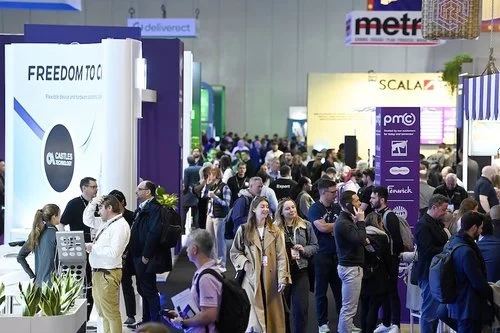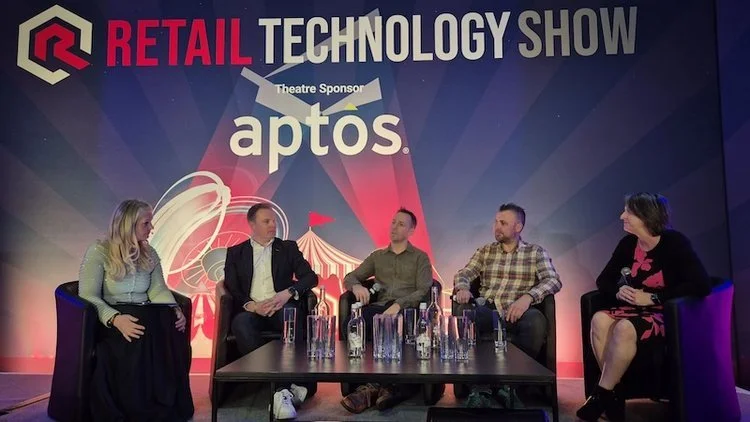The new retail technology stack: humanised AI, nimble docs, and scalable translation
The Retail Tech Bottleneck No One Talks About
Retail tech teams today aren’t just juggling tasks - they’re dodging bullets. Marketing wants AI generated content that feels authentic. Operations are tangled in clunky PDF workflows. And the C-suite? They’re wondering why global roll-outs still collapse under their own weight.
I’ve been in those rooms with CTOs who’ve stretched legacy tools to their limits - and they’re still coming up short. The issue isn’t just technical; it’s cultural. Old habits and internal resistance are holding back progress more than any outdated software.
Forget the jargon and sweeping strategies - what matters is fixing the everyday friction points. The goal: a tech stack that adapts to your team, not the other way around. Let’s break down the three most common choke points—and how smart retailers are solving them.
Making AI Sound Like a Human (Without Hiring One)
I’ve read enough AI generated product blurbs to last a lifetime. They’re repetitive, robotic, and somehow manage to say everything and nothing at the same time. The solution isn’t throwing out the AI - it’s teaching it to sound like a person. That’s where the AI content humaniser comes in. These tools take stiff AI output and smooth it into language that actually feels human.
Linguistic studies are backing this shift - approaches like tone modulation and sentence restructuring have proven effective in bypassing AI detectors with humanised language, making the output feel more organic and natural.
Retailers are already seeing better engagement results, and broader research into generative AI's impact on customer engagement confirms that these upgrades to AI output aren’t just cosmetic - they drive real outcomes.
Real Use Cases in Retail
One cosmetics brand I worked with was cranking out AI written descriptions, but nothing was landing. They started using a humanising tool trained on their in-house tone - and within a week, click-through rates jumped by 18%. It wasn’t just about making better copy; it was about sounding like themselves.
Other retailers are using the same approach for chatbot scripts, post-purchase emails, and in-store signage. Some are going a step further, layering in AI translation and voice emulation technologies to make multilingual communication feel more natural.
In fact, emerging research on translation tools shaping multilingual communication highlights how this kind of nuance increases trust and comprehension across language barriers.
Why PDF Overkill Is Killing Your Workflow
PDFs are like the fax machines of retail ops - ancient, unavoidable, and weirdly resistant to change. For years, Adobe Acrobat has been the go to, but let’s be real: it’s overkill for tasks like approving markdown plans or updating store maps. Teams waste hours exporting, annotating, re-exporting. It’s exhausting.
A cost-effective alternative to Adobe Acrobat can save you more than just money - it can give your team hours back. Independent reviews of the best PDF editors for business workflows consistently show that leaner tools offer faster performance and smoother collaboration features.
The best new tools are lightweight, fast, and collaborative. One retailer I worked with cut document approval time by 40% after switching to a streamlined PDF editor with built-in comments and cloud sync.
They also integrate more smoothly with your everyday tools - Slack, Drive, mobile PoS systems. And increasingly, teams are pairing them with omnichannel order management solutions to keep teams aligned and workflows unclogged.
Local Isn’t Optional: Scaling Translation Without Losing Your Mind
Going global used to mean opening stores. Now it means launching languages. But most translation systems weren’t built for speed - or change. I’ve seen entire launches stall because translations lagged behind product or UX updates. Manual handoffs still rule the day, and it’s a mess.
Brands that automate translation deployment are solving the problem at the source. If localisation is something your team “figures out later,” you’re probably bleeding time and budget. One brand I worked with tied a live translation layer to their CMS. Overnight, they could push updates in a dozen languages - automatically. No waiting. No chasing.
And when those systems plug into your dev stack? Even better. Translated text flows right into app releases and campaign builders. It’s the kind of automation that mirrors dynamic translation integration with enterprise tools, ensuring speed and consistency across channels.
Combine that with strategies for international e-commerce expansion - think regional logistics, payment models, and cultural localisation—and you’ve got a roadmap that’s actually scalable.
The Roadmap for Retail Tech Builders
To modernise your retail technology stack effectively, begin by identifying and addressing key bottlenecks that hinder your operations. Evaluate whether your current AI tools produce robotic sounding content, if your document workflows are sluggish, or if translation processes are impeding your global reach.
● Implement AI Content Humanisers: Tools to humanise AI can transform AI generated text into natural, engaging language, enhancing customer interactions and marketing materials.
● Adopt Cost-Effective Document Tools: Consider alternatives to big brand names like Adobe Acrobat or Office and focus on the ones that offer robust features at a fraction of the cost, streamlining document management and approval workflows.
● Automate Translation for Global Expansion: Utilise platforms to automate and manage translations efficiently, facilitating faster and more accurate localisation of content for international markets.
By integrating these targeted solutions, you can enhance operational efficiency, reduce costs, and position your retail business for scalable growth in a competitive market.
Realignment, Not Reinvention
When I look at the retail teams that are thriving, the pattern is clear. They’re not chasing hype. They’re cutting the dead weight. AI that sounds like a human. Docs that don’t eat the whole afternoon. Translation that doesn’t lag six weeks behind.
This isn’t about reinvention - it’s about realignment. Building a stack that fits your team’s rhythm. One that improves time-to-market, keeps handoffs clean, and stops wasting budget on tools that barely pull their weight.































